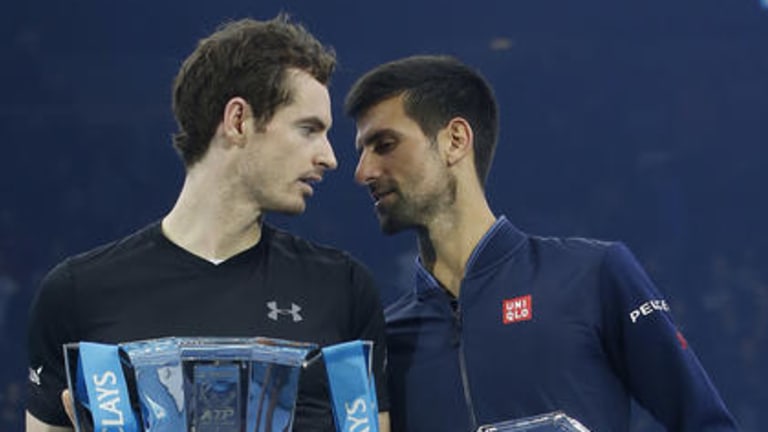Andy Murray stood at the center of the baseline and watched a ground stroke from Novak Djokovic float toward him. On most occasions, faced with a ball like this, Murray would be happy to send the ball back safely into his opponent’s court and wait for a better opportunity to come along.
But this wasn’t most occasions. In fact, it was unlike any other occasion in Murray’s 12-year career. This was the first time he had reached the title match at the ATP World Tour Finals in London, his adopted hometown. More important, it was Murray’s first opportunity, at the ripe old tennis age of 29, to finish a season ranked No. 1. To get to this precipice, he had won his last 23 ATP matches; all he needed was one more. Fittingly—and unfortunately—it would have to come against his biggest nemesis, and the man who had won this event the last four years.
Through the first half-hour of play, Murray had twice reached break point, but both times he had tightened up and put a ball into the net. Now, with Djokovic serving at 3-4 in the first set, Murray reached break point again. This time, instead of biding his time with a safe backhand, Murray backpedaled around the ball and took it on his forehand side. This time, instead of rallying with caution, he let loose with a shot that normally isn’t his specialty, an inside-out forehand. Now it was Djokovic who had to play defense, and who put the ball in the net.
Murray had his break. From there he raced to a 6-3, 4-1 lead, and, after a stumble or two down the homestretch, he had his No. 1-clinching win, 6-3, 6-4.
